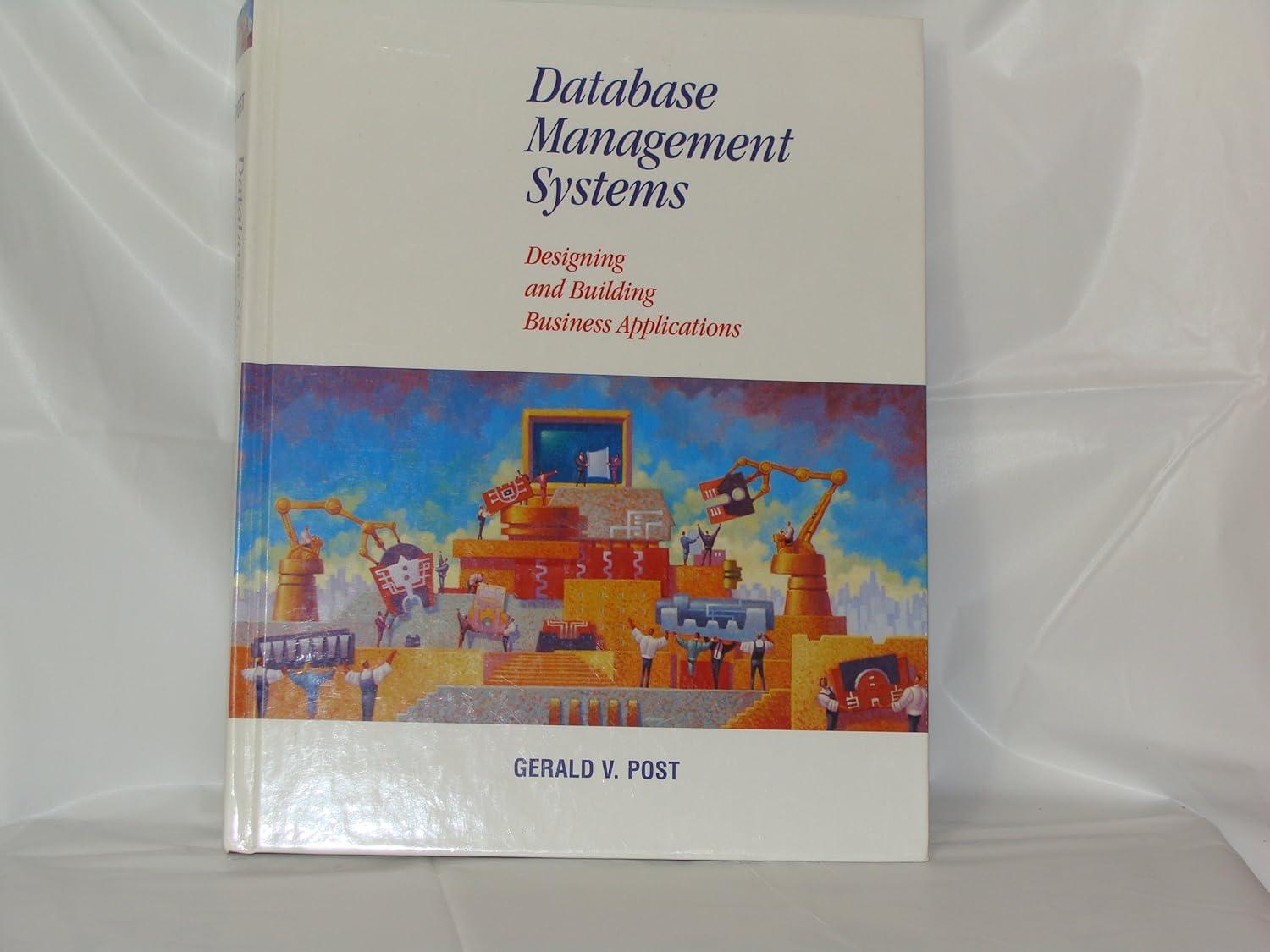Question
I need the heapifyAdd method implmented. Please and thank you! /* * To change this license header, choose License Headers in Project Properties. * To
I need the heapifyAdd method implmented. Please and thank you!
/*
* To change this license header, choose License Headers in Project Properties.
* To change this template file, choose Tools | Templates
* and open the template in the editor.
*/
package patientheapsimulation;
import java.util.Arrays;
/**
* An array-based maxHeap implementation.
*
* @author
* @version 2017-10-17
* @param
*/
public class ArrayHeap
private int count; // count points to next empty slot, also is size
private T[] heap;
private final int initCapacity = 10;
/**
* Constructor for class ArrayHeap.
*/
public ArrayHeap() {
heap = (T[]) (new Comparable[initCapacity]);
count = 0;
}
/**
* returns (without removing) the maximum element in the heap
*
* @return T the maximum element
* @throws EmptyCollectionException
*/
@Override
public T findMax() throws EmptyCollectionException {
if (count == 0) {
throw new EmptyCollectionException("Heap");
}
return heap[0];
}
/**
* Removes and returns the maximum element in the heap The heap then changes
* in order to maintain validity.
*
* @return T the maximum element
* @throws EmptyCollectionException
*/
@Override
public T removeMax() throws EmptyCollectionException {
if (count == 0) {
throw new EmptyCollectionException("Heap");
}
if (count == 1) {
return heap[--count];
}
T element = heap[0];
heap[0] = heap[--count];
heapifyRemove();
return element;
}
/**
* Adds the element to the heap, making sure that the heap remains valid
*
* @param element to be added
*/
@Override
public void addElement(T element) {
if (count == heap.length) {
expandCapacity();
}
heap[count++] = element;
heapifyAdd(); // call this to ensure that the item swaps up, as needed
}
/**
* Returns true if heap is empty, false otherwise
*
* @return boolean true if empty
*/
@Override
public boolean isEmpty() {
return count == 0;
}
/**
* Returns the number of elements in the heap
*
* @return int the count of elements in the heap
*/
@Override
public int size() {
return count;
}
/**
* private method that swaps out the new root, and swaps it down the heap
* until it is in the correct position
*/
private void heapifyRemove() {
// called after the item at the bottom-left has been put at the root
// we need to see if this items should swap down
int k = 0;
int left = 1;
while (left < count) {
int max = left;
int right = left + 1;
if (right < count && heap[right].compareTo(heap[left]) > 0) {
max = right;
}
T parent = heap[k];
T child = heap[max];
if (parent.compareTo(child) < 0) {
//swap
heap[k] = child;
heap[max] = parent;
k = max;
left = 2 * k + 1;
}
else {
break;
}
}
}
/**
* Private utility method to expand Array capacity.
*/
private void expandCapacity() {
heap = Arrays.copyOf(heap, heap.length * 2);
}
/**
* Private method to do swapping up the heap as needed,
* to put the newly added element into the right position in the heap.
*/
private void heapifyAdd() {
// assign newly added item to a temp var.
// use an index variable to keep track of the index where that value was added
// while the index isnt pointing at the root, and while the node at this index is greater than the node at its parent:
// copy the parent node to the index location (move parent node down the heap)
// set the index to the parent index
// when we are at the root, or the parent of current index isnt bigger, we are done
// copy the temp variable to the location of the current index.
}
@Override
public String toString() {
String arr = "";
for (int i = 0; i < heap.length; i++) {
arr = arr.concat(heap[i].toString() + ", ");
}
return "ArrayHeap{" + "count=" + count + ", heap=" + arr + '}';
}
}
Step by Step Solution
There are 3 Steps involved in it
Step: 1

Get Instant Access to Expert-Tailored Solutions
See step-by-step solutions with expert insights and AI powered tools for academic success
Step: 2

Step: 3

Ace Your Homework with AI
Get the answers you need in no time with our AI-driven, step-by-step assistance
Get Started


